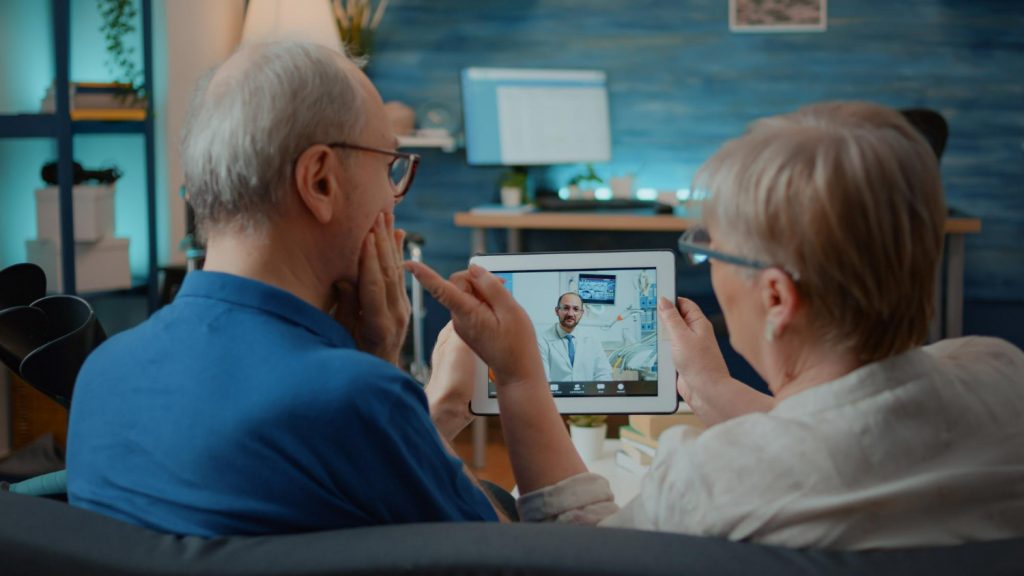
Does Your Insurance Cover Freezing Eggs?
Explore women’s options for covering the cost of egg freezing with insurance, including financial assistance programs that may help cover expenses.

Between a heavy workload and never-ending obligations, squeezing in a doctor’s visit on an already tight schedule can seem impossible. Fortunately, nowadays, telehealth services like Doctor on Demand make healthcare more accessible, providing people with online access to doctors and therapists they can use anywhere and anytime.
Convenience aside, they pave the way to more equitable healthcare by tackling the disparities in how people perceive and obtain medical care.
But what is Doctor on Demand, how does it work, and is it better than in-person appointments?
This Shortlister article explores the relatively new approach to remote healthcare to understand its potential and answer some of the most common questions.
During the pandemic, we started hearing more about telehealth, or the use of technology to access healthcare services remotely.
However, many probably don’t know that its origins go back to the 1960s when NASA used the advantages of telemedicine, a subset of telehealth, to monitor astronauts in flight during one of their missions.
Fast forward to the 21st century, our busy lifestyles and the COVID-19 pandemic have made telehealth an inseparable part of how healthcare services are delivered, allowing patients to receive medical assistance remotely.
Overall, the telehealth landscape has grown significantly over the decades.
Studies show that 76% of hospitals connect with patients using some form of information and communication technology.
One of them is Doctor on Demand.
It’s a leading telehealth platform that remotely connects patients with licensed doctors, psychologists, and other specialists through video consultations. As the name suggests, it offers on-demand medical care, enabling patients to receive medical advice, diagnosis, and treatment from their homes.
As an employee benefit, Doctor on Demand is a valuable addition to the workplace that promotes accessibility, addresses mental health needs, and enhances the overall employee well-being and work-life balance.
Considering the significant growth of telehealth, other services that cover remote healthcare include virtual healthcare, remote patient care, telemedicine, and more. Although they are often used interchangeably, much like Doctor on Demand, they explore different aspects of using telecommunications technology in medicine.

Virtual healthcare is a broad term that describes providing medical services through digital platforms, eliminating the need for in-person visits to a healthcare facility. As such, it encompasses a wide range of applications, including video consultations, healthcare apps, or remote monitoring of vital signs. As a comparison, Doctor on Demand is a specific platform that offers virtual care services.
Remote patient care involves the monitoring and managing a patient’s health condition outside of a medical facility.
Like Doctors on Demand, it utilizes technology to collect and transmit patient data, enabling health providers to access, diagnose, and treat individuals remotely. However, it also involves wearable devices that track vital signals like blood pressure, diabetes, heart conditions, etc.
The purpose of remote patient care, as part of telehealth and virtual health, is to make the monitoring of acute and chronic diseases more accessible and reduce the patient’s travel costs and infection risks.
Although they sound similar and can be used synonymously, telemedicine is a subset of telehealth that focuses explicitly on providing medical care and remote clinical services. On the other hand, telehealth can be broader and include other non-clinical services like provider training or administrative meetings.
Doctor on Demand connects patients with licensed healthcare professionals online via video consultations.
To use it, they must follow a few easy steps:
Patients can choose from a range of medical specialties, including a primary care doctor, mental health professionals, paediatricians, and more.
Then, at the appointment, they communicate with their doctor through secure and confidential video sessions to discuss their symptoms, medical history, or potential health concerns.
Based on the assessment and diagnosis, the healthcare provider should recommend a treatment plan, much like an in-person doctor’s appointment.
However, a potential concern for many is whether Doctor on Demand can prescribe medication, and the answer is yes. They can prescribe medications and electronically send them to the patient’s preferred pharmacy, provide lifestyle recommendations, and suggest further diagnostic tests.
Finally, an excellent feature is that patients can schedule quick follow-ups on their condition, which ensures ongoing support and a personalized approach to healthcare.
Like its unique approach to healthcare, virtual care also comes with a different price tag.
So, what does Doctor on Demand cost people with and without insurance coverage?
Before insurance, Doctor on Demand by Included Health charges $79 for a 15-minute consultation with a board-certified clinician. This urgent care covers anything from a cold or skin condition to women’s and men’s health, allergies, and headaches. It can’t, however, treat more severe conditions like injuries, chest pain, or loss of consciousness.
Chronic care 50-minute consultations can cost $75 and cover chronic health conditions like asthma, high cholesterol, high blood pressure, diabetes, weight management, and thyroid conditions.
For a therapy session with a psychologist, the cost ranges from $129 for 25 minutes to $179 for 50 minutes. Psychiatrist consultations are somewhat more expensive, up to $299 for the initial 45-minute session.
There aren’t any subscription models, so each visit is paid individually.
Doctor on Demand can be free when it’s part of an employee benefits package or covered by a health insurance plan.
Although both provide medical care, it’s essential to understand the differences between Doctor on Demand and in-person healthcare services before choosing one.
The telehealth option, including this one, offers the convenience of accessing healthcare remotely, allowing patients to save time on a doctor’s visit. This can also be particularly helpful for those with mobility constraints or living in more remote areas.
However, while it provides convenience and accessibility, Doctor on Demand lacks direct face-to-face interaction, comprehensive physical examination, and immediate access to emergency facilities.
It also offers a smaller range of specialized care and treatment plans.
While telehealth options focus on non-emergency medical concerns and routine care, in-person healthcare is better suited for emergencies and critical care requiring immediate medical intervention.
When a person needs medical attention, a timely and calculated decision can make a real difference in the outcome.
The severity of the situation makes it easy to decide between an online or an in-person appointment, and making an informed decision requires further understanding of the advantages and disadvantages of telehealth, including Doctor on Demand.
|
Advantages |
Disadvantages |
|
|
The advantages of Doctor on Demand vs. in-person care really stood out in the past couple of years as the COVID-19 pandemic took its toll on an already fickle healthcare system.
According to Health System Tracker, since the start of the pandemic, life expectancy dropped across all races and ethnicities in the U.S., healthcare spending continued to grow, and the situation has exacerbated the pre-existing barriers to accessing care.
In fact, in 2021, 21% of American adults either delayed or didn’t get medical care due to these barriers.
The lockdown measures made access to medical care even more challenging and negatively impacted people’s mental health.
Around that time, telehealth started gaining momentum as an alternative that allowed people to receive care without a risky hospital trip or talk to a therapist online. According to a McKinsey study, telehealth use increased 38 times compared to before the pandemic, with a peak in April 2020 that was 78 times higher than two months prior.
The popularity and convenience of virtual care and digital health, including Doctor on Demand, remains high.
Although the WHO declared the end of COVID-19 as a global health emergency, people continued using telehealth post-pandemic. Consumers believe it is an essential process for their future care needs, with 40% of them answering positively to using telehealth in the future, compared to 11% pre-pandemic.
Moreover, 58% of physicians view these services more favorably post-COVID-19, 84% offer virtual visits, and 57% would continue this practice.
As for employers, telehealth is a promising addition to the employee benefits package and a great way to position themselves at the forefront of healthcare innovation while prioritizing their workers’ well-being.
In the past few years, many have grown accustomed to the convenience of on-demand service apps like Doctor on Demand. Although their growth remains to be seen, the data clearly shows a promising future for virtual healthcare.
A Zion Market Research report estimates that the global market for healthcare applications will reach $111.1 billion by 2025 with a compound annual growth rate (CAGR) of 38.26%. According to Statista, however, this number can increase to $189 billion.
More recent data reveals that in 2022, the telehealth market was valued at $82.5 billion and is projected to grow at a CAGR of 24% until 2030.
The numbers show a positive outlook for telehealth services in the near future.
With the evolution of the healthcare industry, rapid technological growth, and the increasing demand for accessible care, telehealth is a game-changer that can transform how we perceive and get medical attention.
It’s also a step in the right direction to democratize the healthcare system in the U.S. and cushion the current disparities in access to medical care.
Democratizing healthcare aims to address disparities in access, use, and outcomes by providing equal opportunities for individuals to seek and receive healthcare services. This includes anything from reducing financial barriers to leveraging technology.
In that way, telehealth is democratizing healthcare by:

Despite its advancement and future potential, telehealth services like Doctor on Demand won’t completely replace traditional in-person healthcare.
Instead, their purpose is to complement it by overcoming common healthcare access barriers, allowing patients and doctors to maximize its benefits.
Content Writer at Shortlister
Browse our curated list of vendors to find the best solution for your needs.
Subscribe to our newsletter for the latest trends, expert tips, and workplace insights!

Explore women’s options for covering the cost of egg freezing with insurance, including financial assistance programs that may help cover expenses.

Beyond legal compliance, accommodating chronic illness in the workplace has become a strategic tool for companies to control costs and improve employee well-being.

As a new generation of anti-obesity drugs like Ozempic, Wegovy, and Mounjaro can potentially improve millions of Americans’ health and lives, the question arises: what’s the hidden cost?

As virtual-first health plans continue to evolve, healthcare providers must adapt to changing care delivery models and embrace the opportunities and challenges of providing care in a virtual setting.
Used by most of the top employee benefits consultants in the US, Shortlister is where you can find, research and select HR and benefits vendors for your clients.
Shortlister helps you reach your ideal prospects. Claim your free account to control your message and receive employer, consultant and health plan leads.